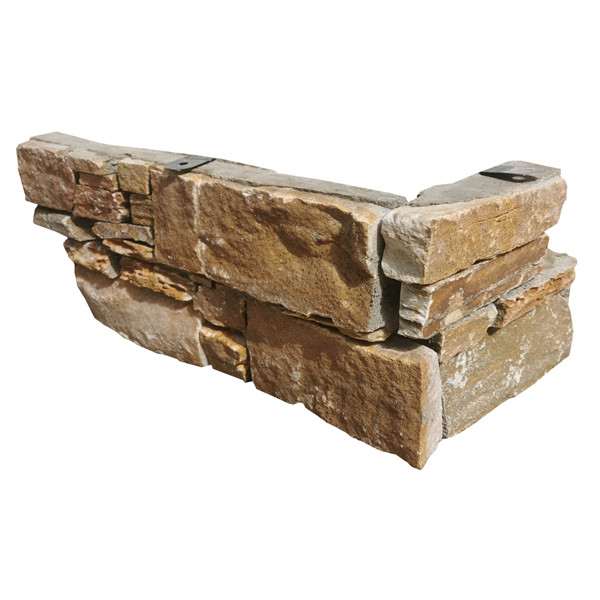Introduction:
In the world of architecture and construction, the use of natural stone has always been revered for its timeless beauty, durability, and character. However, the limitations in terms of availability, cost, and environmental impact have led to the development of alternative materials such as cultured stone. Cultured stone, also known as manufactured or artificial stone, is a versatile and cost-effective solution that replicates the look and feel of natural stone while offering unique design possibilities. In this article, we will delve into the evolution of contemporary cultured stone, its various types, manufacturing processes, applications, and the benefits it offers to the construction industry.
The Origins of Cultured Stone:
Cultured stone has a rich history that dates back to ancient civilizations where artisans and craftsmen used techniques to create artificial stones for building purposes. The Romans, for example, used a form of artificial stone made from a mixture of lime, sand, and volcanic ash to construct monuments and structures that have stood the test of time. Over the centuries, advancements in technology and materials have paved the way for the development of modern cultured stone products that closely mimic the appearance of natural stone.
Types of Contemporary Cultured Stone:
Contemporary cultured stone comes in a variety of types, each offering unique aesthetics and characteristics. Some of the most popular types of cultured stone include:
1. Manufactured Cultured Stone: This type of cultured stone is made by mixing lightweight aggregates, cement, and iron oxide pigments to create molds that replicate the texture and appearance of natural stone. Manufactured cultured stone can be customized to mimic various types of natural stone such as limestone, granite, and slate.
2. Polyurethane Cultured Stone: Polyurethane cultured stone is a lightweight and flexible option that is often used for interior applications such as accent walls, fireplaces, and backsplashes. This type of cultured stone is known for its ease of installation and ability to be molded into intricate shapes and designs.
3. Engineered Cultured Stone: Engineered cultured stone is made by combining natural stone particles with resins and pigments to create a durable and weather-resistant material. This type of cultured stone is ideal for exterior applications such as facades, columns, and landscaping features.
Manufacturing Processes:
The manufacturing processes involved in creating contemporary cultured stone vary depending on the type and desired characteristics of the final product. However, there are some common steps that are typically followed in the production of cultured stone:
1. Mixing: The raw materials such as aggregates, cement, pigments, and additives are mixed together in precise proportions to create a homogenous mixture.
2. Molding: The mixed materials are poured into molds that are designed to replicate the texture and shape of natural stone. The molds are typically made from silicone or other flexible materials that allow for intricate details to be captured.
3. Curing: The molded cultured stone is left to cure and harden for a specific period of time to ensure that it reaches the desired strength and durability.
4. Finishing: Once the cultured stone has cured, it is removed from the molds and can be finished to achieve the desired color, texture, and appearance. This may involve processes such as sanding, painting, or sealing.
Applications of Cultured Stone:
Contemporary cultured stone finds a wide range of applications in both residential and commercial construction projects. Some of the common applications of cultured stone include:
1. Exterior Cladding: Cultured stone is often used as a decorative cladding material for exterior walls, facades, and accent features. Its lightweight nature and ease of installation make it a popular choice for adding visual interest to buildings.
2. Interior Design: Cultured stone can be used to create stunning interior design elements such as accent walls, fireplaces, columns, and archways. Its versatility in terms of color and texture options allows for endless design possibilities.
3. Landscaping: Cultured stone is commonly used in landscaping projects to create retaining walls, garden borders, pathways, and water features. Its durability and weather resistance make it a practical choice for outdoor applications.

Benefits of Cultured Stone:
Contemporary cultured stone offers a multitude of benefits that make it an attractive choice for architects, designers, and homeowners alike. Some of the key benefits of cultured stone include:
1. Cost-Effective: Cultured stone is generally more affordable than natural stone, making it a budget-friendly option for achieving the look of stone without the high price tag.
2. Lightweight: Cultured stone is lightweight compared to natural stone, which simplifies transportation, handling, and installation processes. This can result in cost savings and reduced labor requirements.
3. Versatility: Cultured stone comes in a wide range of colors, textures, shapes, and sizes, allowing for endless design possibilities. It can be customized to suit specific aesthetic preferences and architectural styles.
4. Roofing slate and UV protection : Cultured stone is designed to withstand various weather conditions, UV exposure, and wear and tear over time. It is resistant to fading, cracking, and chipping, ensuring long-lasting performance.
5. Eco-Friendly: Cultured stone is often made from recycled materials and requires less energy and resources to manufacture compared to natural stone. This makes it a sustainable and environmentally friendly choice for construction projects.
Conclusion:
Contemporary cultured stone has become a popular choice in the construction industry due to its aesthetic appeal, versatility, and cost-effectiveness. With advancements in manufacturing technologies and materials, cultured stone products now closely replicate the look and feel of natural stone while offering unique design possibilities. Whether used for exterior cladding, interior design, or landscaping, cultured stone continues to be a versatile and durable material that enhances the visual appeal of buildings and spaces. As the demand for sustainable and affordable construction materials grows, cultured stone is poised to play a significant role in shaping the future of architecture and design.
